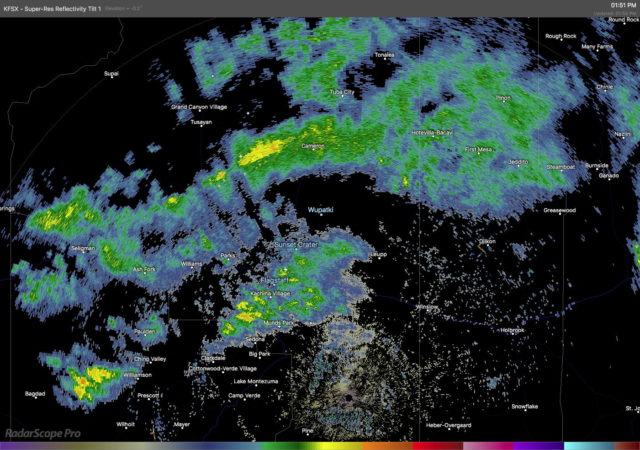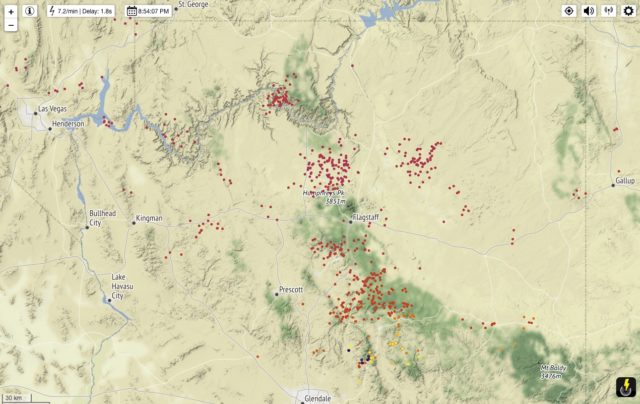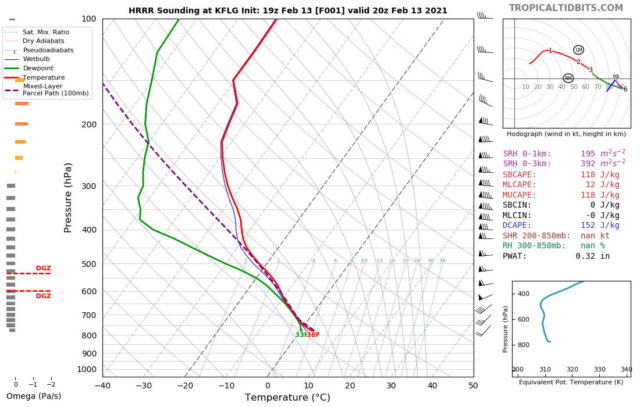Thundersnow. Just the sound of it is exciting—snow accompanied by thunder and lightning. Although it is fairly rare east of the Rocky Mountains it is a bit more common across the west.
And we had multiple rounds of thunderstorms producing snow yesterday (Saturday, 13 February 2021) in Flagstaff. It was pretty amazing to see heavy snow falling and then a sudden flash of lightning followed by the muffled sound of thunder a few seconds later.

There were several clusters of thunderstorms that moved across the area during the afternoon. None of these were recorded by the ASOS at KFLG—and it’s not obvious why they were missed. The ASOS certainly captured the start of snow and then the moderate (SN) and heavy snow (+SN). Perhaps the lightning was just far enough away to not register.
KFLG 132307Z VRB06G25KT M1/4SM +SN FZFG VV004 M01/M02 A2960 RMK AO2 P0006 T10111017 KFLG 132257Z 29009G27KT 260V340 1/4SM SN FZFG VV005 M01/M01 A2961 RMK AO2 PK WND 24031/2239 SLP027 P0007 T10061011 KFLG 132243Z 27012G31KT 1/4SM SN FG BKN008 OVC029 00/M01 A2959 RMK AO2 PK WND 24031/2239 P0004 T00001006
Here is a loop of the visible channel from the GOES-17 satellite. Superimposed on the clouds are color blobs showing Group Flash Count Density from the satellite lightning mapper. The next image shows lighting from surface-based lightning detectors and shows numerous cloud-to-ground strikes across northern Arizona.

Model-generated soundings from the HRRR showed that there was very slight convective instability with surface-based CAPE values of around 100 J/kg.

That is a shallow layer of instability and very weak instability—but was enough to generate thundersnow.


